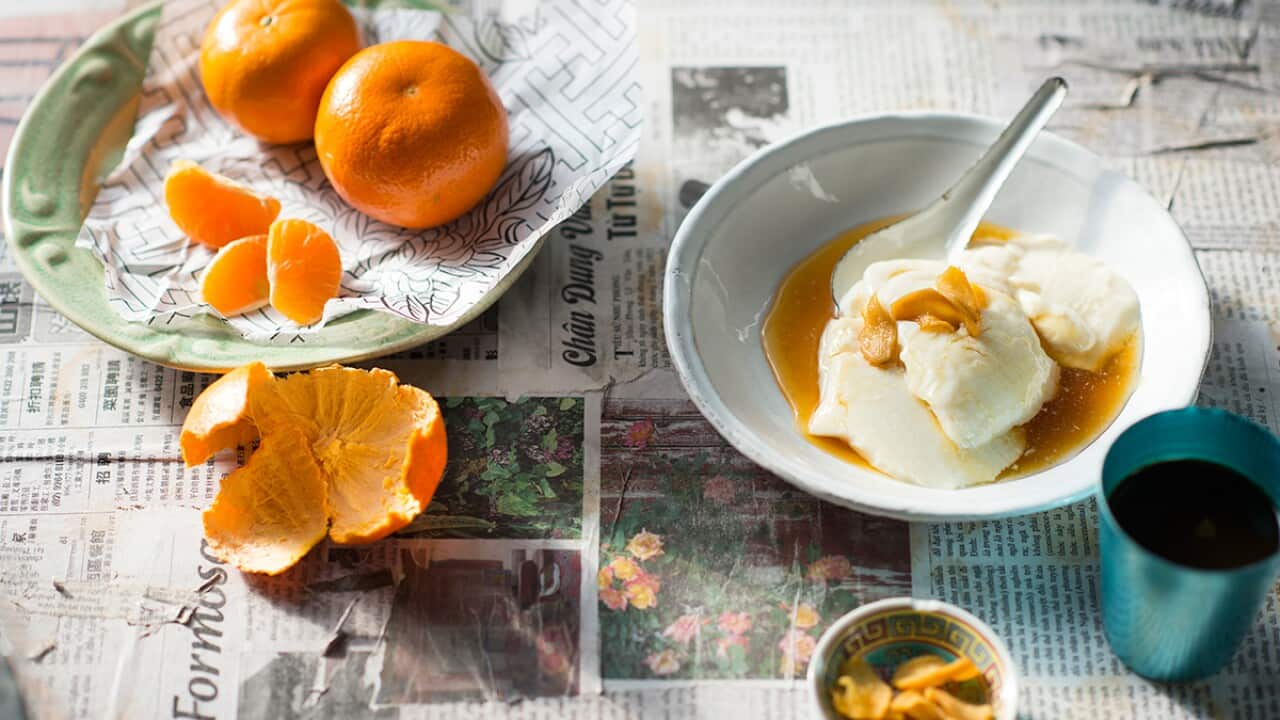Hiromori, a 5th-generation wagashi (traditional Japanese confectionery) maker, takes a little ball of red bean paste and wraps it with a dough made from white bean paste and rice flour. His hands move quickly and with grace, in precise, thoughtful movements. He's rolling the dough into a smooth, round ball, which will then be carved, pinched, shaped into bite-sized pieces of edible art.
"It's addictive to watch," says Justine Schofield, host of Justine's Flavours of Fuji, who is visiting Hiromori in Hamamatsu, Shizuoka, where he crafts these little works of art at his family's 140-year old wagashi shop, Ganyudou.
Wagashi - "wa" meaning Japanese, "gashi" meaning sweets - were originally created to complement tea during traditional tea ceremony practice. These days, wagashi are given as gifts, eaten as snacks, made for particular celebrations, and served as dessert—they're profoundly integral to Japanese cuisine and culture, yet, outside Japan, tend to be overshadowed by more familiar foods like sushi and ramen. Within Japan, they can be found fairly ubiquitously, waiting to be discovered everywhere from convenience stores and supermarkets to artisan wagashi shops, and it's the latter where you can experience the confectionery as a true art form.
"This is what I find so interesting about Japanese food," says Justine, "The finesse to everything that's done. There's always so much thought that goes into everything. People specialise in certain things and take many, many, many years to become a master."
Like much of Japanese cuisine, the ingredients for wagashi are fairly simple and all-natural: bean paste, different rice flours, agar agar, sugar and some natural food colouring derived mainly from plants and flowers.
"The real art is in the shaping," says Justine, as she watches Hiromori craft a camellia flower. Next, he shapes a cherry blossom, a wagashi emblematic of spring.
"Even sweets are really symbolic of the seasons here in Japan."
The forms of wagashi, their ingredients, colours and textures, are inspired by the four seasons. In autumn, wagashi using chestnuts and sweet potato are popular, and come often in burgundy and fawn. Momiji - autumn leaves - are a common shape to find.
In winter, many of the wagashi are white, representing snowy scenes. Abstract forms of cranes, which come famously out to feed and dance in winter, can be found, as well as confectionery shaped like the winter peony flower.
In summer, water-based jellies like "mizu shingen mochi" (raindrop mochi) using agar agar - a seaweed substitute for gelatine - are popular, cohering to ancient Japanese beliefs that these jellies have refreshing properties needed to counter the summer fatigue.
Aside from seasons, the little edible art pieces are informed by folktales, poems, literature, textiles, and ceremonies. For autumn equinox, it's customary to eat "tsukimi-daifuku" - "moon-viewing rice cakes". For New Year, "hanabira-mochi" is eaten to symbolise new beginnings. It comprises a circle of white mochi dough folded over a stick of candied gobo root and pink mochi centre. The pink is to represent the ume blossoms of spring. The shape reflects the ayu fish, a symbol of longevity.
Wagashi are shaped by hand, with the assistance of a few specially-crafted tools. Hiromori presses a yellow-stained piece of dough through a dainty bamboo-wrapped sieve, creating fine strands for the stamen of the cherry blossom. The stamen is gently plucked off with fine-tipped tweezers and placed at the centre of the flower.
"These sweets are all crafted with an incredible amount of detail and precision," says Justine.
"It's almost too perfect to eat. This is art".
airs with double episodes Sundays at 7.30pm on SBS Food (Channel 33). After they air, episodes will stream at .






